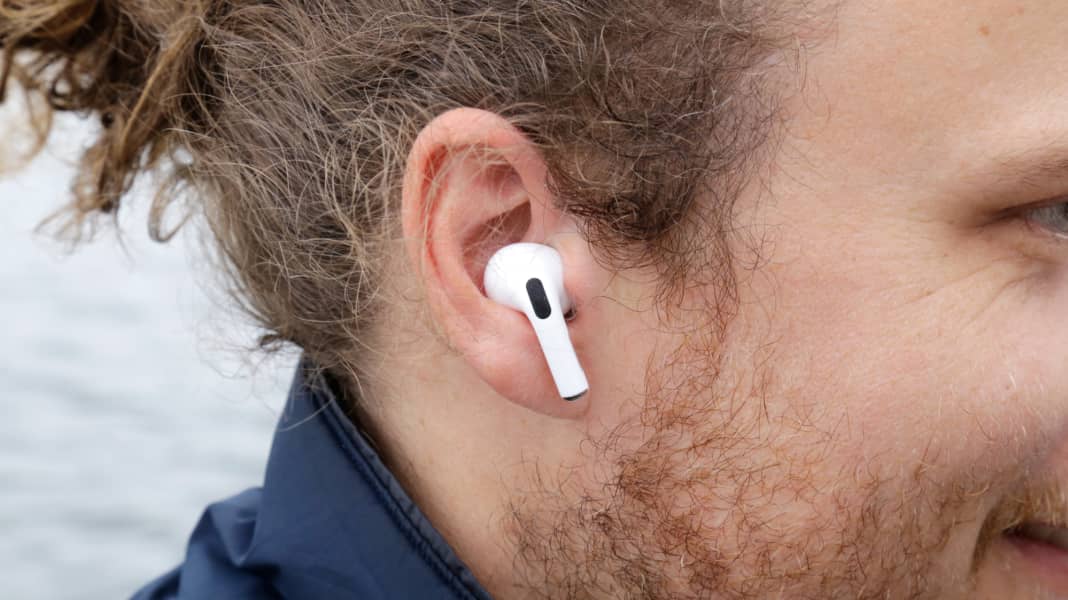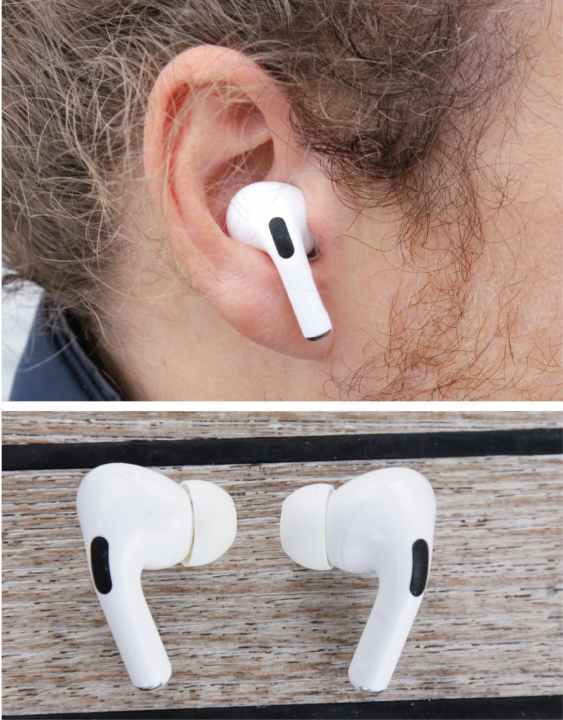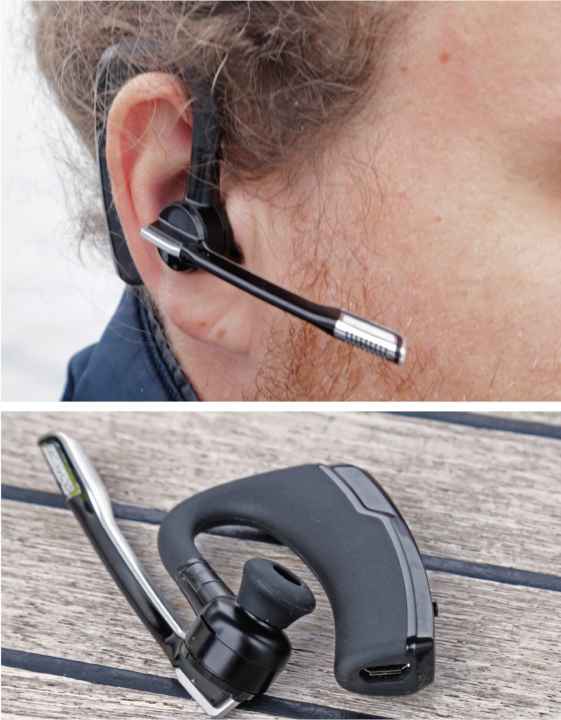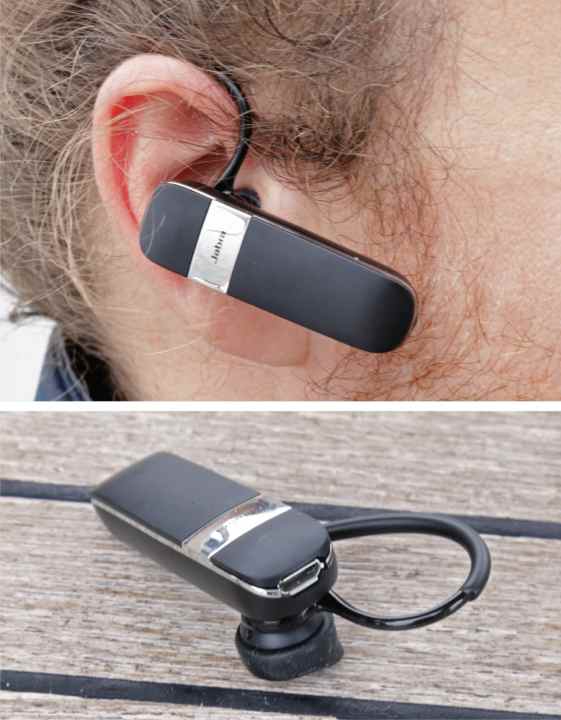
A lot of communication between the helmsman and the foredeck is necessary, especially during anchor manoeuvres: Is the bottom visible, is it possible to manoeuvre to a spot without seaweed? The distance to other boats and the water depth are also crucial pieces of information that need to be exchanged. Once the right spot has been found, the boat must be stopped, the anchor dropped and dug in. Ideally well-timed, by arrangement.
Bluetooth headsets are a good way of communicating on board, even over longer distances or in harsh conditions, as they allow normal phone calls in conjunction with a smartphone. This can be advantageous because the hands remain free and duplex calls can be made simultaneously. However, network coverage is a prerequisite. However, this is usually the case, especially in harbours or bays. A headset can also be very practical when working in the rig.
Two free hands are particularly important here, and the wind noise increases with height, which is why it is harder to hear when someone calls out. Do you need to fetch or haul a halyard or switch on the top light on a trial basis? Instead of shouting, you can communicate at a normal volume.
We have tested these headsets
Three headsets were tested: the Apple Airpods, the Callstel 4.2 professional headset and the Jabra Talk 15 SE. In addition to the different functionality, the prices also vary greatly between 30 and 200 euros.
Basically, the calls were made very intuitively using the button in the ear. With all three headsets, the smartphone was first connected via Bluetooth and then a call was started. The button is placed in the ear and the phone can be safely placed in a pocket under the oilskin or left below deck. In this way, normal conversations are possible and, unlike with walkie-talkies, the flow of conversation does not come to a standstill if both participants accidentally speak at the same time. In the rain, the Airpods have the advantage of being waterproof. However, all headsets are automatically covered by a hood or cap. The cheaper products from Callstel and Jabra can also be recommended without hesitation.
With the Airpods, a single earpiece is also sufficient, leaving the other ear free for ambient noise or calls from the bridge. The disadvantage of the smartphone solution is that some mobile phone contracts may incur costs for calls abroad. At sea, for example when changing headsails, this method only works near the coast with mobile phone network coverage or a dedicated Wi-Fi network on board.
Are Apple's Airpods too expensive? And do they even prove themselves on the water?
Everyone already has the expensive hardware, the smartphone. However, two devices need to be purchased for hands-free communication. However, they are still cheaper than most walkie-talkies. The headsets from Callstel and Jabra work well, the Callstel model sits a little more comfortably behind the ear.
Apple's Airpods are very expensive in comparison. However, they do of course offer the added value of being able to listen to music in high quality and have a noise-cancelling function. Purchasing them specifically for in-flight communication seems excessive in view of the price.
If you already have it anyway, just try it out the next time you're anchoring or in the harbour. With a button in your ear and commands that can be understood without shouting, manoeuvres go smoothly. Depending on your requirements, headsets on board are worth buying. Walkie-talkies are independent of the network and therefore cover other needs. Four devices tested.
Headset test: the results
Tests were carried out under realistic conditions, on board during harbour and anchor manoeuvres.
Apple Airpods (3rd generation)

The microphone suppresses wind noise and the plug in the ear is protected against water in accordance with the IPX4 standard. This is at least sufficient against rain and splash water. The Airpods are charged in the case, which has an integrated battery. This in turn can be charged wirelessly or via USB cable. Connection is via Bluetooth. Smartphone and network are required. Duplex calls can be made as normal.
Technical data
- Manufacturer: Apple
- ModelAirpods (3rd generation)
- Charging connection: USB
- Weight (with case): 57 g
- Price: 199 Euro
- Rating: Very good (*****)
- apple.com
Callstel mobile phone 4.2 professional headset

The microphone and earpiece of the compact headset can be rotated so that it can be worn on either side. The sound from the microphone and earpiece is good and the connection to the smartphone is simple. The internal lithium battery should last for up to 6 hours of talk time. That's more than enough. Not waterproof, but it works when worn under the hood. Attractive price.
Technical data
- Manufacturer: Callstel
- Model4.2 professional headset
- Charging connection: USB
- Weight (with case): 16 g
- Price: 35,99 Euro
- Rating: good (****)
- pearl.com
Jabra Talk 15 SE

The cheapest headset in the test. There is a switch for answering calls and a toggle switch for adjusting the volume, that's it. Charging is via USB cable. The Talk 15 SE is not as comfortable as the other solutions. The plastic headband can be removed and turned round so that the headset can be used on both sides. Pairing was easy.
Technical data
- Manufacturer: Jabra
- ModelTalk 15 SE
- Charging connection: USB
- Weight (with case): 9 g
- Price: 29,54 Euro
- Rating: Satisfactory (***)
- kaufland.de

